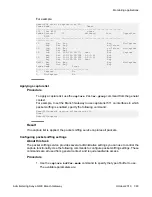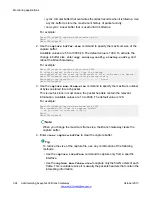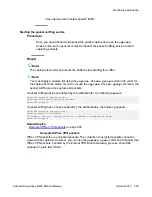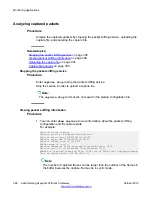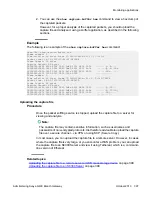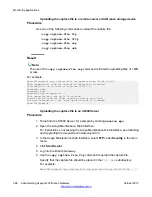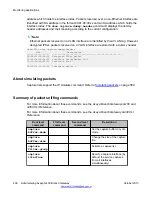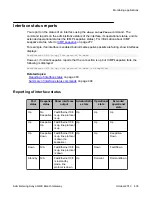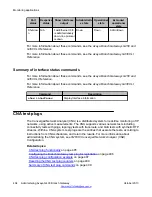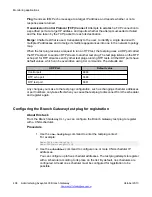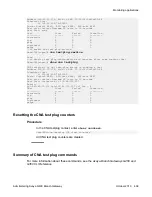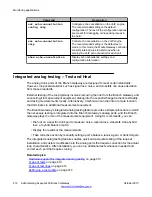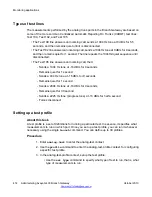
CNA test plug functionality
When activated, test plugs present themselves to the CNA system in a process called
“registration”. During registration, a test plug uses a fingerprint certificate to authenticate the
CNA scheduler, and publishes its IP address and active ports.
The schedulers are software components running on single board computers called
“chatterboxes”. Schedulers are responsible for initiating tests, coordinating tests, and
collecting the test results.
For redundancy and load sharing, CNA systems usually include multiple chatterboxes and,
therefore, multiple schedulers. However, since the schedulers distribute test plug registration
parameters among themselves, a test plug only has to register with a single scheduler. Test
plug administrators typically configure multiple schedulers addresses, for redundancy.
You can configure a list of up to five scheduler IP addresses. The test plug attempts to register
with the first scheduler on the list first, and then moves down the list as necessary if the
registration is unsuccessful.
When the test plug registers with a scheduler, the test plug provides the scheduler with its IP
address, and two UDP port numbers, called the control port and the RTP echo port. The test
plug IP address is the IP address of the interface on which the PMI is configured.
Related topics:
on page 405
Test plug actions
Once registered, the test plug listens for test requests on the control port. When the test plug
receives an authenticated and validly formatted test request from the scheduler, the test plug
performs the following:
• Injects any one of the tests specified in the test request into the network
• Performs the specified test using the parameter values passed in the test request
• Upon successful completion of the test, sends the test results to the analyzer of the
chatterbox whose IP address is designated in the test request
CNA tests
The Branch Gateway test plug supports all of the following CNA tests:
Traceroute:
Measures per-hop round-trip delays to a target IP address by sending a sequence
of hop-limited UDP messages, each with a Time To Live (TTL) value that is one greater than
that of the preceding message.
Real Time Protocol (RTP):
Measures delay, packet loss, and jitter to another test plug by
sending a simulated RTP stream that is echoed back.
Monitoring applications
Administering Avaya G430 Branch Gateway
October 2013 405
Summary of Contents for G430
Page 1: ...Administering Avaya G430 Branch Gateway Release 6 3 03 603228 Issue 5 October 2013 ...
Page 12: ...12 Administering Avaya G430 Branch Gateway October 2013 ...
Page 246: ...VoIP QoS 246 Administering Avaya G430 Branch Gateway October 2013 Comments infodev avaya com ...
Page 556: ...IPSec VPN 556 Administering Avaya G430 Branch Gateway October 2013 Comments infodev avaya com ...



